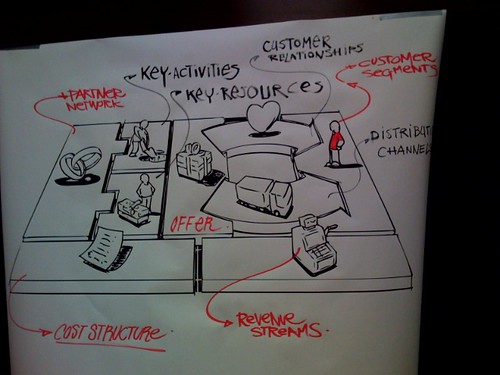
Any successful founder can tell you the financial section of your business model canvas should not be ignored, even if you tend to look at your finances and find the subject to be tedious or a bit overwhelming. This kind of thinking leads some foundres to simply ignore this aspect of their business and hope it all works out. This is why a business plan is so crucial. It forces business owners to take a close look at their finances and how the rest of their plans regarding their business strategy, products, marketing, and sales will meld together to create the profitable business they’ve been working so hard to build.
 Having a plan in place before jumping into business is an essential step to take if you are looking to maintain a viable business. If you are looking to secure a bank loan or want to win over investors, the financial section of your business plan is one of the most essential components, according to Elizabeth Wasserman, contributing writer for Inc. A business financial plan is even important for those businesses that aren’t seeking financial support, as it will become a roadmap in which you can steer your business to financial success.
Having a plan in place before jumping into business is an essential step to take if you are looking to maintain a viable business. If you are looking to secure a bank loan or want to win over investors, the financial section of your business plan is one of the most essential components, according to Elizabeth Wasserman, contributing writer for Inc. A business financial plan is even important for those businesses that aren’t seeking financial support, as it will become a roadmap in which you can steer your business to financial success.
Cash Flow Is King
Your cash flow projections provide investors with the information they need to determine if your business will be a good credit risk. Information from your balance sheets, sales forecasts, and other assumptions make up your business’s cash flow statement, which has to account for every dollar that comes into and goes out of your business. This shows potential lenders and investors whether or not you will be able to meet your commitments within that agreed upon timeframe, especially the repayment of any loans.
Projecting Business Income
Within your business financial plan you need to include an income statement that will forecast your businesses profits and losses for the next three years. The income statement, in essence, is your business’s bottom line. It includes numbers from your sales forecast, cast flow statement, and projections about your expenses. As a new business, your income statement would need to include your projected sales and your expected expenses. After your expenses have been subtracted from your projected sales, you’ll be left with your net income. It is this number that banks and investors look at to decide if your business will be a good risk.
Making It All Add Up
Your financial plan isn’t complete until you’ve dealt with the assets and liabilities that weren’t included in your income statement. The balance sheet is used to project the net worth of your business at the end of each fiscal year. When completing a balance sheet, it is important that your assets and liabilities are perfectly balanced. If you are seeking financing and your numbers don’t add up, you’ll be asked to explain the inconsistency. The best way to ensure your balance sheet adds up is to focus on listing your assets first, then move on to your liabilities. If they don’t balance perfectly, go back and find out what you missed. Never just plug in a number to make the two sides match. This can make you look sloppy and may end up costing you in the end.
The financial section of your business plan is intended to help you see where your business stands in regards to how much financing you will need. It also helps potential investors in determining whether or not you are a good investment. They will want to know when their investment will pay off and exactly how much of a return they will get, according to Investopedia. To ensure you get the backing you need to get your business up and running, you want to make sure the financial section of your business plan includes the right information and is error free.




